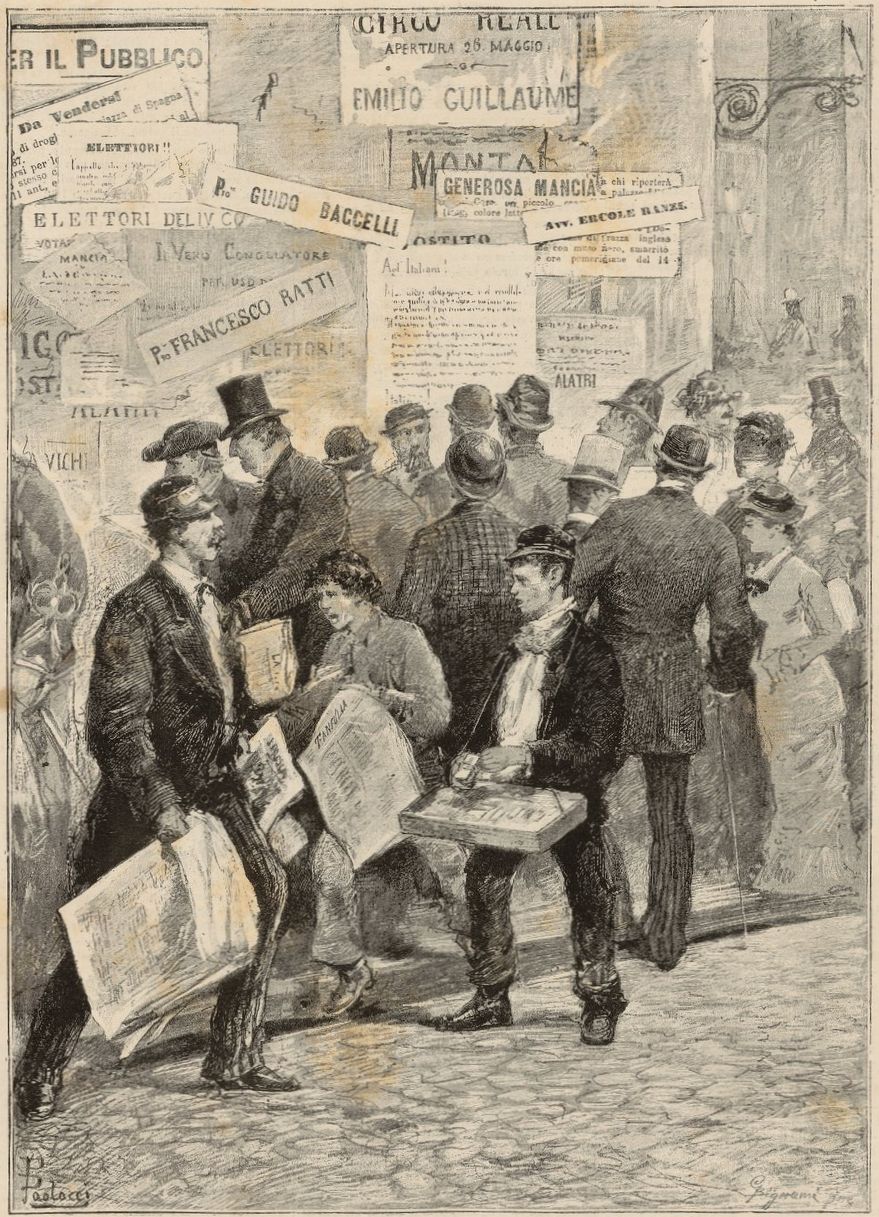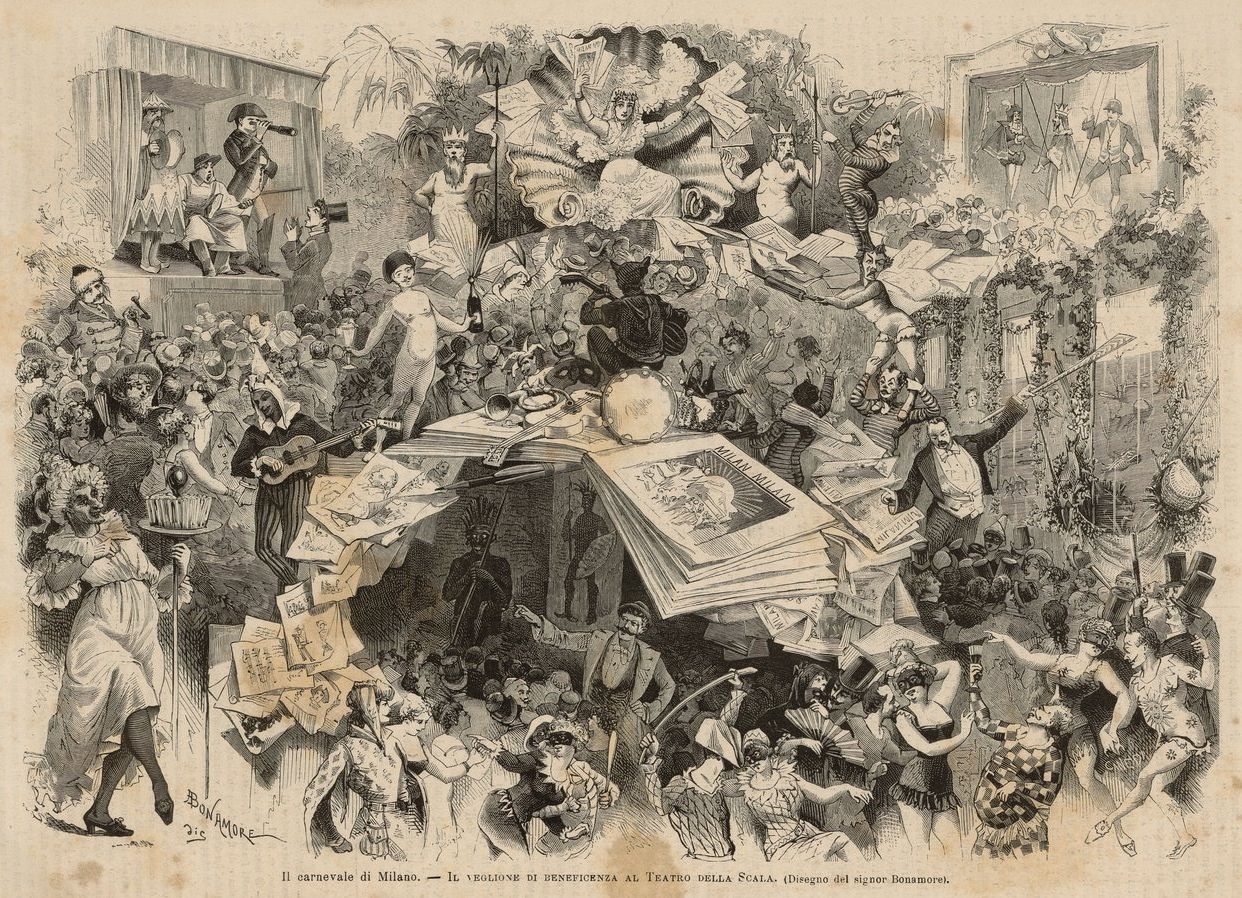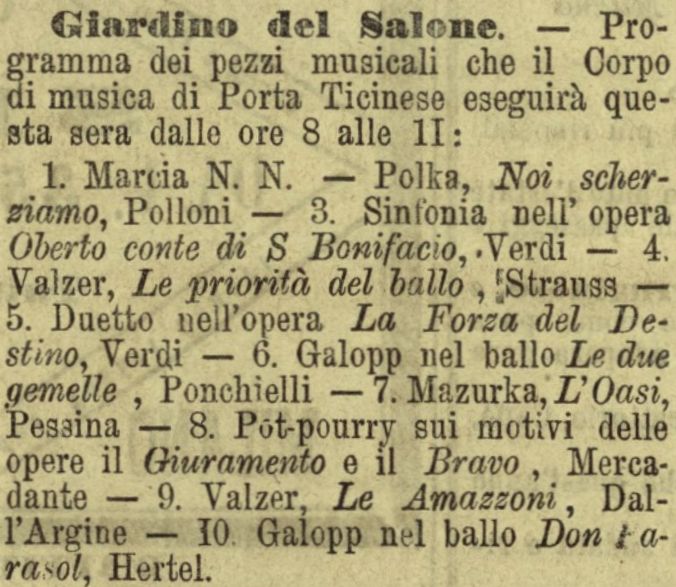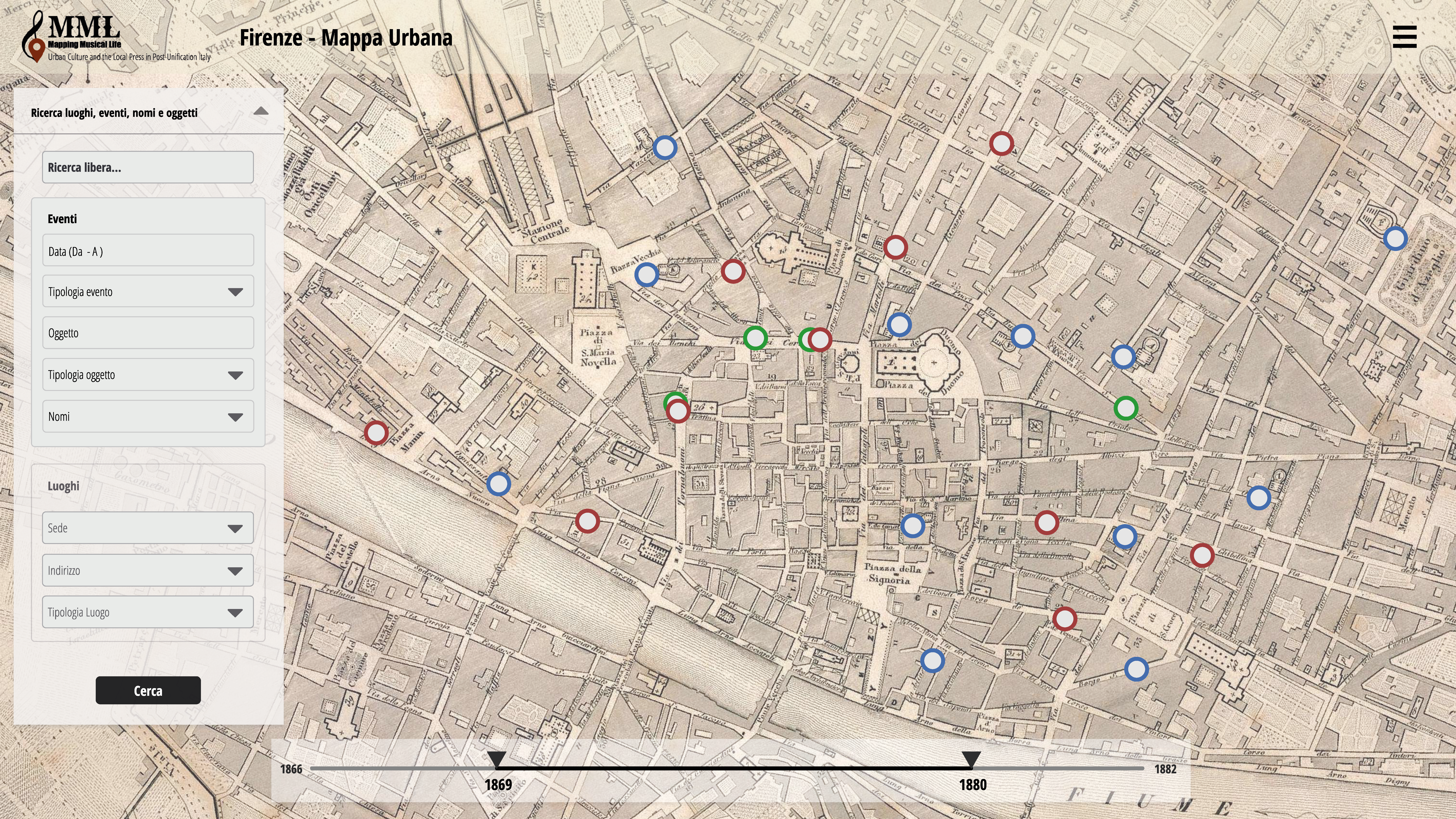MML reconstructs several aspects of musical life in the main urban centers of post-Unification Italy (Milan, Bologna, Florence, Rome, Naples and Palermo) between 1866 and 1882, analyzed and visualized through thematic and interactive maps.
This three-year project (2020-2023) operates according to three convergent trajectories: :
- 1. the implementation of the online database ArtMus (www.artmus.it) with news, reports and review articles on sonic and musical events gathered from local press of the second half of 19th century, for the first time included in the database and thoroughly investigated;
- 2. the visualization of such data through interactive maps;
- 3. the analysis, visualization and narration (StoryMaps) of central topics for nineteenth-century Italian music research, with the aid of digital technologies for spatial analysis (ArcGIS).

MML aims at developing a new model of integrated and systematic historiographical investigation, rooted in the so-called spatial turn. During the last twenty years, such a paradigm has become increasingly central to the social science and the humanities as well, including – from a musicological perspective – urban musicology and sound studies. Through the reconfiguration of the role of spatiality within historical processes, this model highlights the dialectical function between temporal, spatial, and social dimensions. According to this perspective, the city, its musical life, and its soundscape constitute not only a background against which composers and their works stand out, but they also become the main tool for the spatializing history and historicizing urban spaces.

In the urban contexts of post-unification Italy, musical production and assimilation are intertwined with complex political issues, diversified institutional structures and different models of self-representation, as the local press thoroughly illustrate. This is a crucial point of view - until now only marginally adopted in the study of urban musical contexts of the nineteenth century - through which one can reconstruct in a detailed way the articulation of musical life in the city, identify the places and reconstruct the music venues, the ways of assimilation, the main aesthetic inclinations of critics and the public, the historical discourse on musical identity as it is articulated in different municipal realities in relation to the national and transnational dimension.

MML aims to use mapping not just as a representation of data, but above all as a methodological tool to connect and explore musical life in a given city. Through the geographic information system (GIS), which allows to georeference or geolocate music spaces/venues and musical events in context, MML will be able to visualize specific aspects or characteristics of the musical life of a city (for example music performed in concert-halls and private houses, operas represented in peripheral theatres, music for collective ceremonies, etc.). Comparing interactive maps will allow us to explore the intersections of space, time, music and musicians within the city and among the different cities on which MML focuses.
